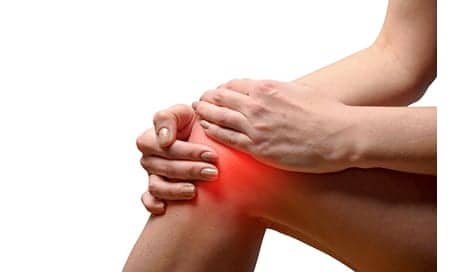(Reuters Health) Patients with knee osteoarthritis and insomnia may be less troubled by joint pain after they get treatment to help them sleep better, a recent study suggests.
Knee osteoarthritis, a leading cause of pain and disability in older adults, occurs when flexible tissue at the ends of bones wears down. While it can’t be cured, physical therapy or anti-inflammatory medications are often prescribed to relieve pain and improve mobility.
More than 70 percent of people with knee osteoarthritis also suffer from sleep disturbances, researchers note in the journal Pain.
For the current study, researchers randomly assigned 100 people with both insomnia and knee osteoarthritis to receive eight sessions of either cognitive behavioral therapy for insomnia (CBT-I), designed to shift thinking about sleep and bad habits that contribute to insomnia, or behavior desensitization therapy designed to diminish emotional and physical responses to arousing thoughts and behaviors related to sleep.”
Researchers assessed participants’ perceptions of pain before treatment and again three and six months after the interventions finished. The study team expected the CBT-I to achieve a greater reduction in what’s known as pain catastrophizing, or feeling exaggerated levels of pain that are amplified by being emotionally upset about the pain. Instead, they found similar reductions in negative perceptions of pain with both the cognitive behavioral therapy and behavior desensitization.
“Sleep is really important and when it is compromised like in insomnia it can increase the risk for many negative health outcomes, including chronic pain, depression, obesity, high blood pressure and more,” said lead study author Sheera Lerman, a behavioral health researcher at Johns Hopkins University School of Medicine in Baltimore.
“The good news is that for most people with insomnia, it can be effectively treated without using medication,” Lerman said by email.
Regardless of what intervention they received, participants experienced fewer negative feelings about both daytime and nighttime pain by the end of treatment, and this persisted three and six months afterwards.
People who had greater reductions in nighttime awakenings early in the study also had a larger decline in negative feelings about pain than people who didn’t experience this type of sleep improvement early on.
The results suggest that even brief interventions focused on sleep improvement may make a big dent in negative feelings people have about their pain, the authors conclude.
One limitation of the study is that people started out with relatively low levels of pain catastrophizing, and there might have been a bigger effect from treatment or a larger difference between therapies if participants had more intense negative feelings about their pain, the researchers note.
Without these therapies, there are still many things patients can do to improve their sleep routines that may also influence how they experience pain, said Jean-Michel Brismee, a researcher at Texas Tech University Health Sciences Center in Lubbock who wasn’t involved in the study.
Going to bed and waking up at the same time every day can help, as can eating well, avoiding big meals and caffeine in the hours right before bedtime, and getting plenty of exercise, Brismee said by email.
“If you have knee osteoarthritis, walking may hurt . . . so find some activities that do not increase the pain such as tai chi, yoga, and cycling,” Brismee said.
“Do gentle breathing exercises for a couple of minutes while in bed,” Brismee added. “They can lower the activity of your sympathetic nervous system and improve your sleep.”
[Source: Reuters]





